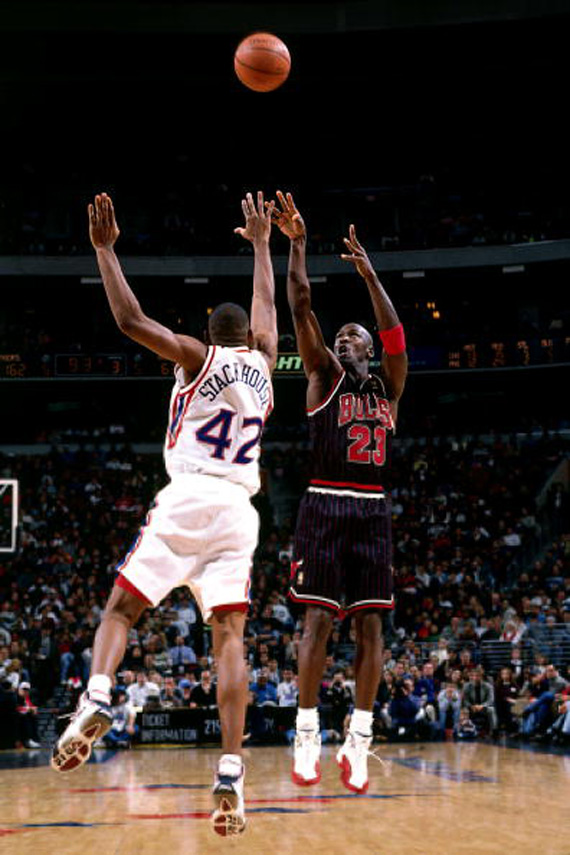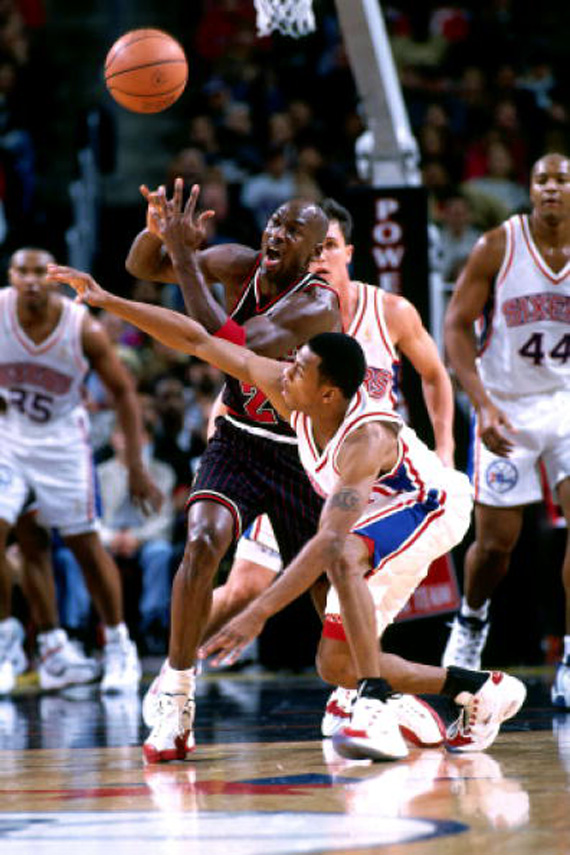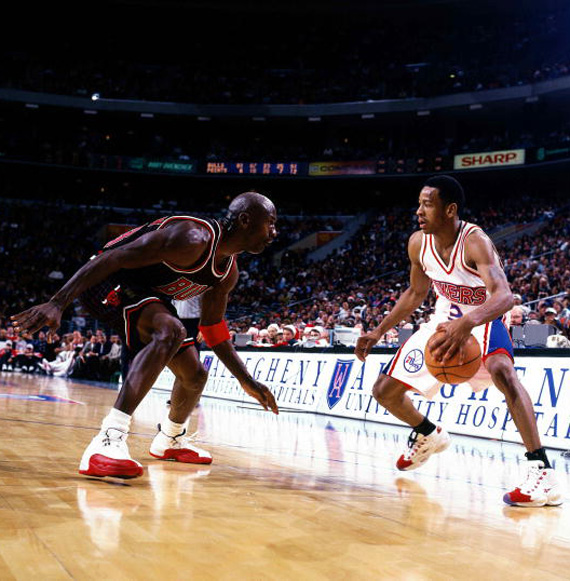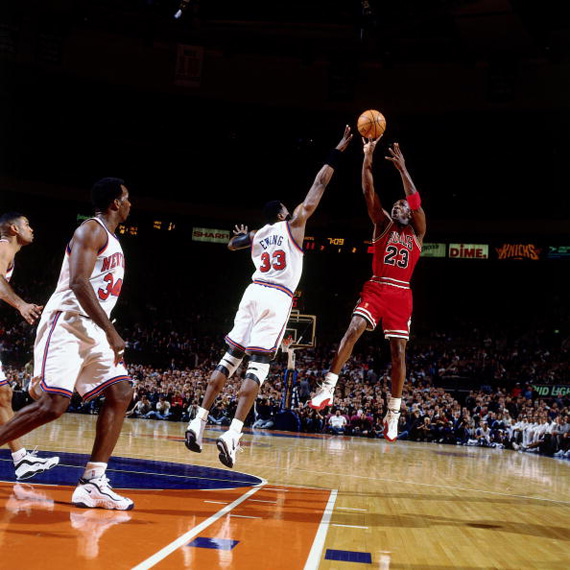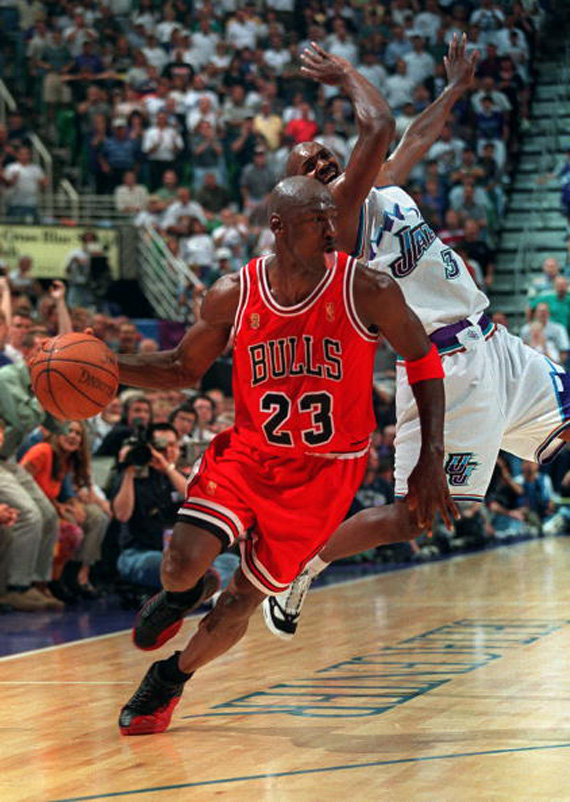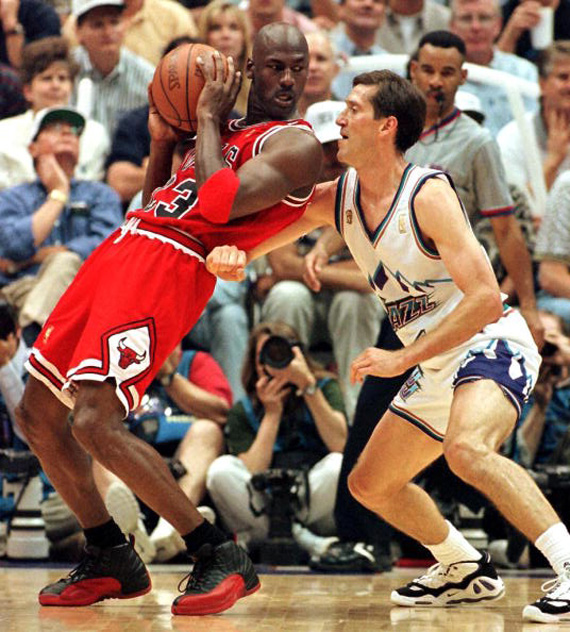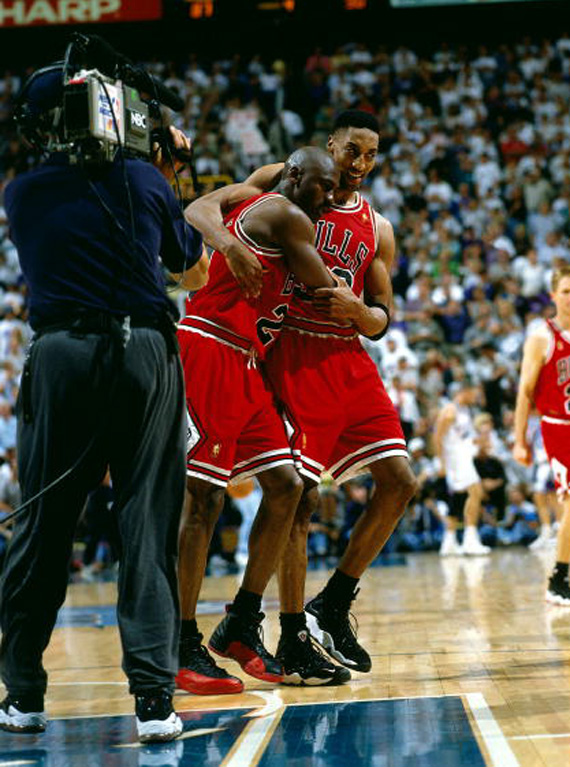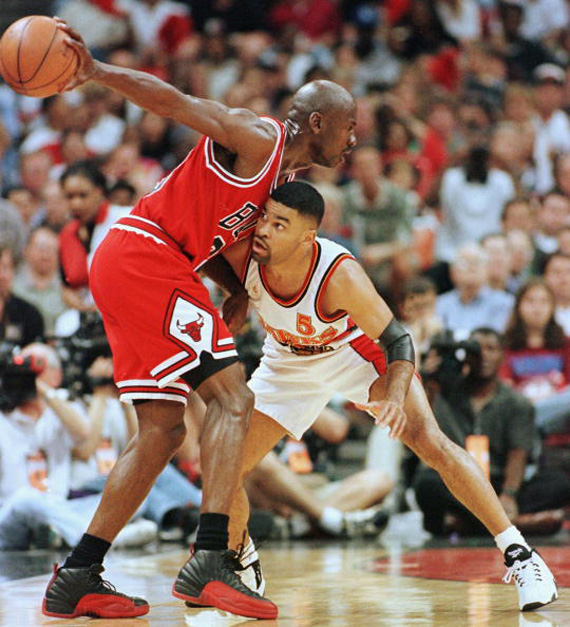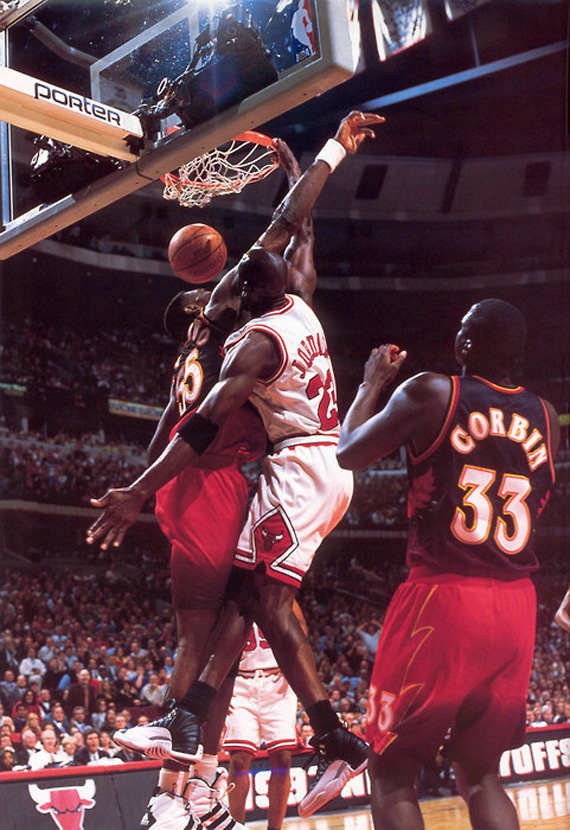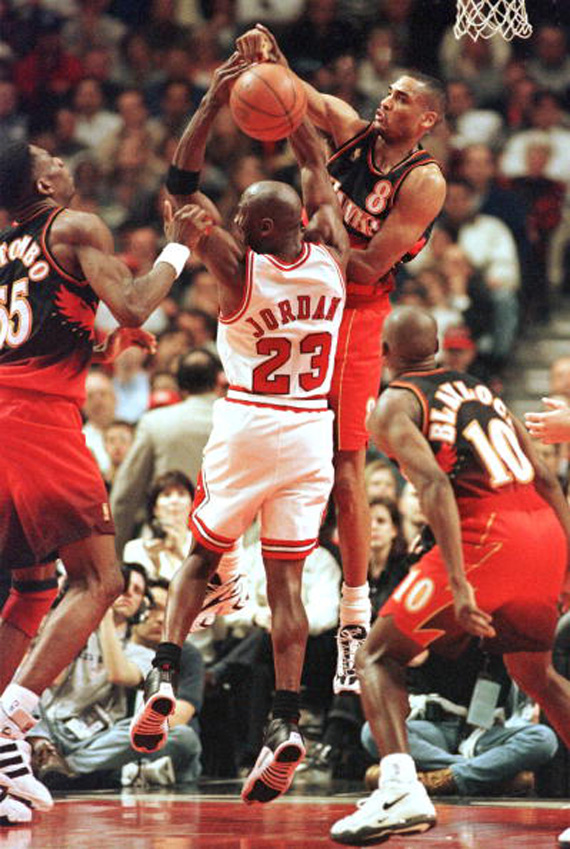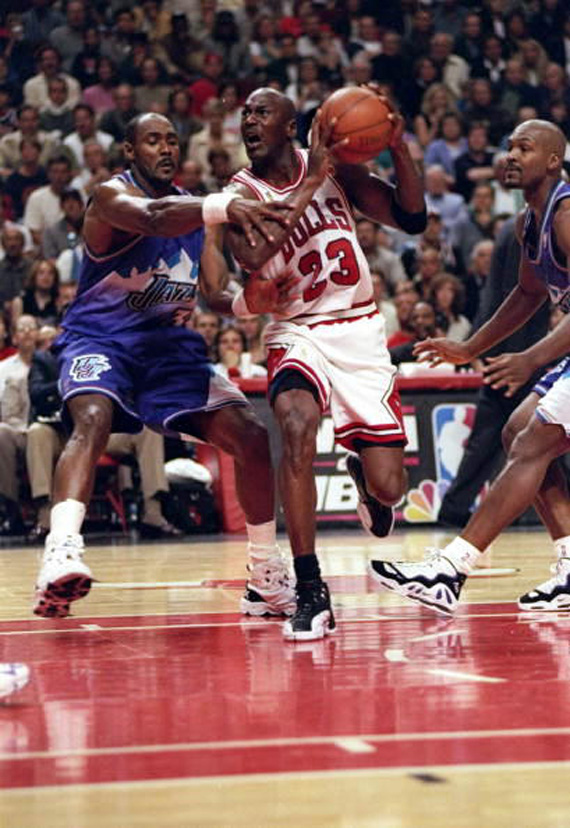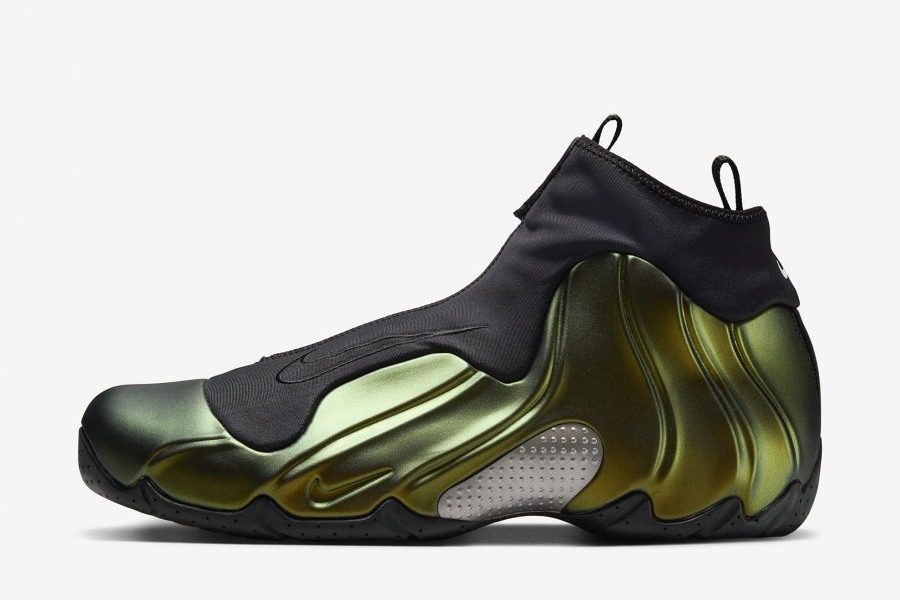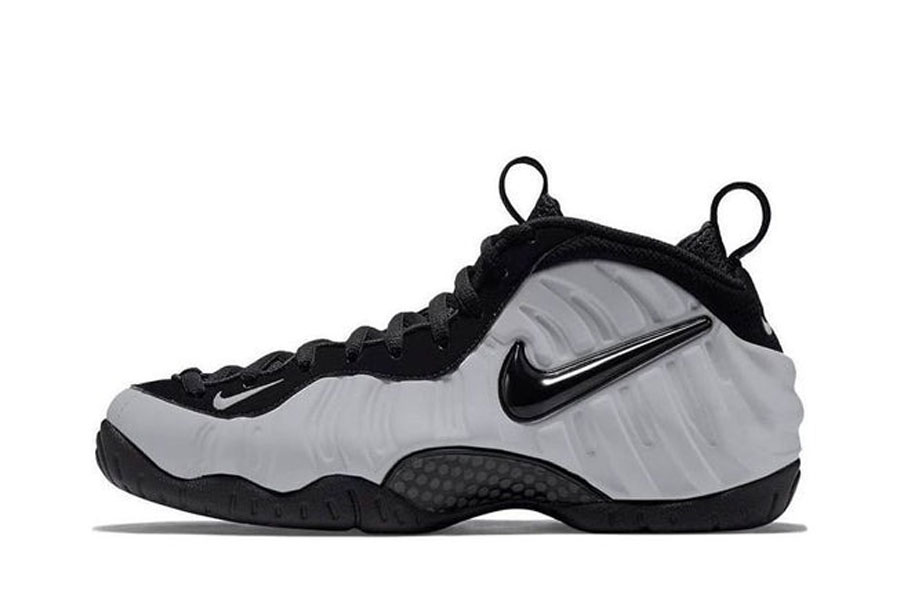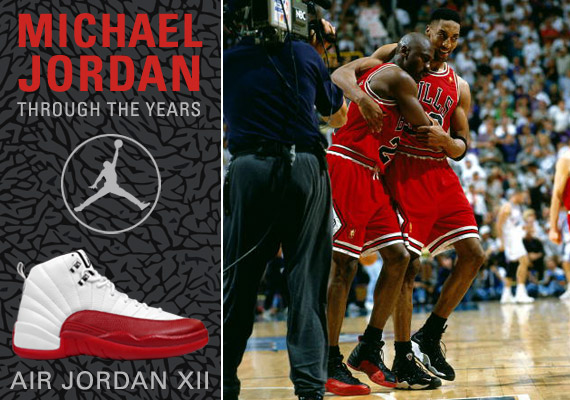
The ’95-’96 Season for the Chicago Bulls was one for the record books; Michael Jordan led his team to an astounding 72-10 regular season record and an NBA Championship, earning the MVP trifecta from the regular season, All-Star Game, and NBA Finals. It also served as an astounding spotlight for the Air Jordan XI, which today is still attributed to Jordan’s winningest and most successful moments. Saying the previous NBA season was a tough act to follow is as much of a redundant statement as one can possibly be, but Jordan’s perpetual greatness has a tendency to leave us at a loss for words. The ’96-’97 NBA Season was just another chapter in the greatest story in NBA history, as Michael led the Bulls to its fifth NBA Title and 69 regular season wins, dismantling league MVP Karl Malone and the Utah Jazz in six games.
Despite his clear dominance over the entire league, some critics noted that Jordan was perhaps on the decline, as most star players do around their early 30’s. At age 33, Michael proved the detractors wrong while defiantly stating “Tell me I can no longer fly. I want you to.” and back up his words with another MVP-worthy campaign, a triple-double performance at the All-Star Game, and league scoring title while being named one of the best defensive players in the league. A June meeting with Karl Malone and the Utah Jazz was projected to be Michael’s toughest Finals opponent yet; Michael again quieted the critics by hitting a game-winning buzzer-beater in Game 1 and scoring 38-points in a legendary performance in a pivotal Game 5, one in which Michael put his team on his back while being hampered by a terrible flu. Game 5 of the ’97 Finals is now referred to as the ‘Flu Game’, one in which Michael displayed an ethereal power and greatness on the court while appearing terribly human and physically devastated on the sideline.
During the ’96-’97 NBA Season, Michael showcased the Air Jordan XII; it was designed once again by Tinker Hatfield, who drew inspiration from Misshoki (the Japanese flag) and the Rising Sun as well as a 19th-century woman’s dress boot. The Air Jordan XII featured unique stitching patterns on the upper, a reptilian material on the mudguard, gold-plated lace-eyelets, and full-length Zoom Air cushioning – a first for the Air Jordan. Five original colorways of the Air Jordan XII exist, with the most recognizable being the Black/Varsity Red colorway that Jordan wore during the historic ‘Flu Game’. Other’s included a Black/White colorway, which Michael wore during the Playoffs and the All-Star Game, a White/Red colorway, which was worn during the regular season, and a fourth pair, given a ‘Taxi’ moniker for its use of Taxi Yellow on the upper. A fifth Obsidian/White pair was also released, but was never worn by Michael in a game. The most notable Retro release of the Air Jordan XII was in fact the Black/Red ‘Flu Game’; it released in 2009 with special graphics commemorating Michael’s incredible scoring output during his time of illness. Was the ’95-’96 season a tough act to follow? Certainly, but only Michael Jordan was able to match or surpass his own accomplishments and create another legendary, storied chapter in his own career. Continue reading for a visual recap of Michael Jordan and the Air Jordan XII, and stay tuned to Sneaker News for the next installment of Michael Jordan Through The Years.

